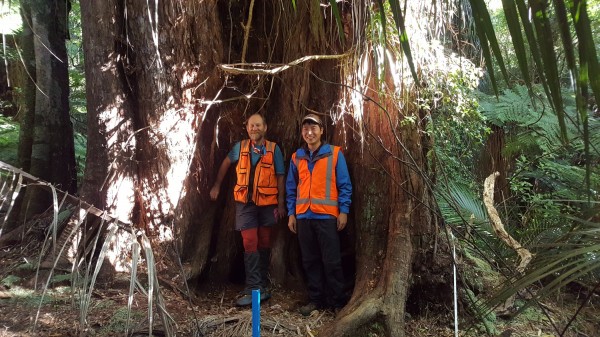Myrtaceae – an “important” family for a carbon-neutral future

Insu Jo
If you google “important”, the first definition according to Oxford languages is “of great significance or value.” The example sentence they give is "important habitats for wildlife." But how does one determine how “important” something is, especially something as big and complicated as a habitat?
A recent study, published in the Journal of Vegetation Science, has attempted to quantify the importance of Myrtaceae, a family of woody plants threatened by the disease myrtle rust. Myrtaceae are widely acknowledged as an “important” part of Aotearoa New Zealand’s ecosystems, but researchers wanted to quantify that importance.
Using nationwide forest and shrubland inventory data collected from 2009 to 2014, researchers discovered that Myrtaceae is a particularly important plant family in New Zealand natural ecosystems based on its abundance and species richness compared with other co-occurring woody families.
“Myrtaceae occurred in 74% of the plots we looked at,” says Insu Jo, lead author of the paper. “And its importance value was the second highest after Nothofagaceae, also known as the southern beeches.”
Researchers also examined Myrtaceae functional traits, like wood density, leaf area and height.
“In general, Myrtaceae tend to be tall trees with dense wood,” says Insu.

Insu Jo (right) with technician Rowan Buxton in the Orongorongo Valley
These properties enable Myrtaceae to store a large amount of carbon. On top of that, high wood density leads to a slower rate of decay after a tree dies. Myrtaceae can also be long-lived, with some individual trees surviving for over 1,000 years. Together, these traits make the family an important one for stable carbon storage.
Not only do the trees themselves store carbon, but they also provide habitats for other organisms to thrive. Preserving and restoring intact ecosystems are essential activities for maintaining biodiversity and lowering levels of atmospheric carbon, helping slow climate change.
However, our Myrtaceae continue to be threatened by myrtle rust. Researchers are only beginning to understand the differences in susceptibility at a species or even individual level – like with COVID-19, some individuals are more hard-hit than others.
“We cannot definitively predict how myrtle rust will impact forest composition and ecosystem processes yet,” says Insu.
More work is needed to understand myrtle rust and the impacts it may have on our forests. Only by increasing our knowledge of this disease – and our knowledge of this important plant family – will we stand a chance of understanding and mitigating the consequences of myrtle rust.
